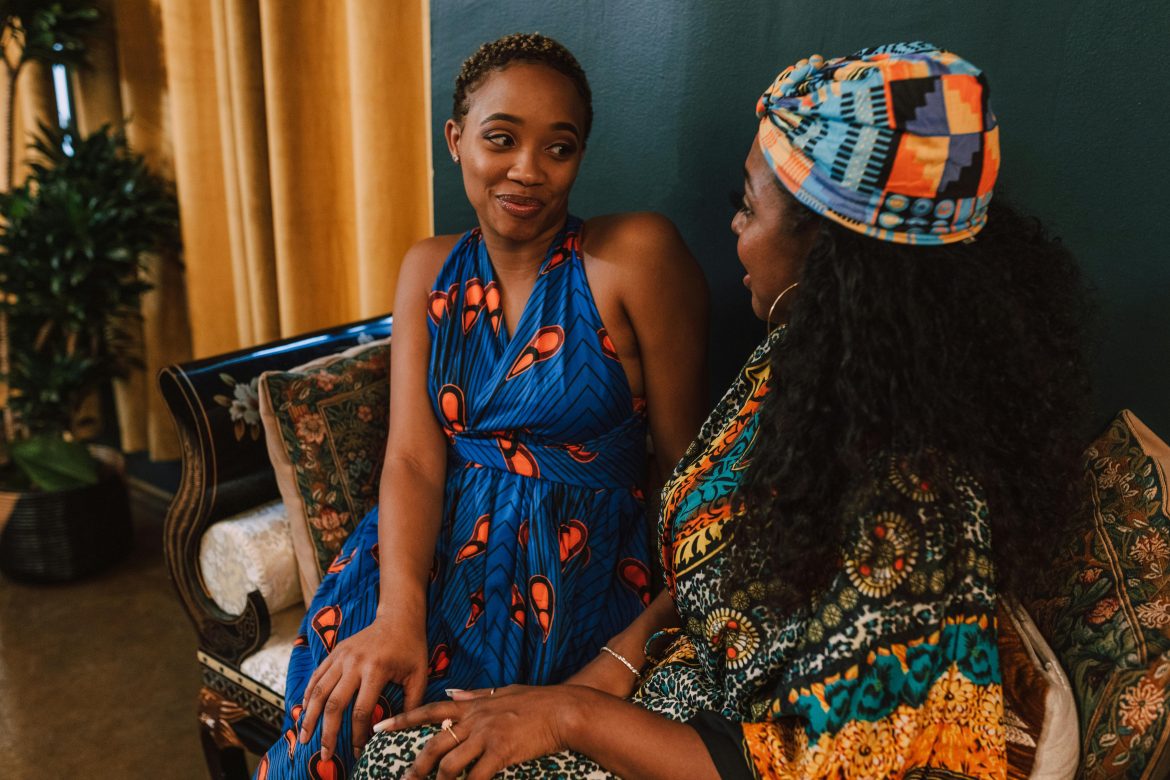African textiles and fabrics have long been a representation of the continent’s rich cultural heritage. From the intricate beadwork of the Maasai to the bold, colorful patterns of West African kente, the fabrics worn by African communities are not only aesthetically striking but are also imbued with history, symbolism, and craftsmanship. In this post, we explore the significance of traditional African fabrics, their origins, and how they continue to be a source of pride and cultural expression across the continent.
1. The Historical Significance of African Fabrics
Traditional African fabrics are more than just garments; they tell stories, represent status, and communicate identity. For centuries, textiles have played a key role in social, cultural, and ceremonial practices across Africa.
- Symbolism and Meaning:
Fabrics are often decorated with patterns and motifs that carry symbolic meanings. For example, the geometric shapes on Kente cloth from Ghana represent wisdom, strength, and unity. Similarly, Adire, a form of indigo-dyed cloth from Nigeria, features intricate patterns that reflect the spiritual and social values of the Yoruba people. - Cultural Identity:
Many African fabrics are tied to ethnic identity. In countries like Nigeria, Kenya, and South Africa, different regions or ethnic groups have their own distinct textile traditions. The fabric worn by individuals can signify their tribe, family, and even their social status within the community. - Ceremonial Use:
Fabrics are often used in traditional ceremonies such as weddings, funerals, and initiations. These events require specific colors, patterns, and types of fabric, making textiles an integral part of African cultural rituals.
2. Popular Traditional African Fabrics
From the bright and bold to the subtle and sophisticated, African fabrics come in a wide range of colors, textures, and styles. Some of the most famous traditional fabrics include:
- Kente:
Kente is one of the most famous and widely recognized African fabrics. Originating from the Ashanti Kingdom in Ghana, Kente is woven from silk or cotton and features vibrant, multicolored patterns that tell stories of power, wealth, and cultural pride. The cloth is worn during significant cultural ceremonies such as weddings, graduations, and other festive occasions. - Ankara (or African Wax Prints):
Ankara, also known as African wax prints, is a popular fabric throughout Africa. Known for its bold, colorful patterns, Ankara is made through a wax-resist dyeing process. It is widely used for everyday clothing, as well as for special occasions. Its popularity has grown internationally, with designers incorporating it into modern fashion collections. - Adire:
Adire is a traditional Nigerian fabric that features indigo-dyed patterns. The fabric is created using a resist-dyeing method, where sections of the fabric are tied or sewn to resist the dye, resulting in unique patterns. Adire is often worn by the Yoruba people and is a symbol of their rich cultural history. - Shweshwe:
Shweshwe is a cotton fabric that originates from South Africa. Known for its vibrant patterns, it was initially introduced by the Dutch during colonial times but has become an important part of South African heritage. The fabric is typically used to create dresses, skirts, and other garments worn during cultural festivals. - Bogolanfini (Mud Cloth):
Bogolanfini, or mud cloth, is a traditional fabric from Mali. The fabric is handwoven, and its patterns are created using fermented mud, which is applied to the cloth to form various symbols and designs. The mud cloth is often used in ceremonial wear and has significant cultural and spiritual meanings.
3. Craftsmanship: The Art of Fabric Making
The process of creating traditional African fabrics is an intricate art form that has been passed down through generations. Each fabric tells the story of the craftsperson’s skill and cultural knowledge.
- Weaving and Dyeing:
Weaving is a key technique in many African fabric traditions. Weavers often use hand looms to create complex patterns and designs. Dyeing techniques, such as the wax-resist method used for Ankara or the indigo dyeing for Adire, are passed down through generations and require a high degree of expertise. - Beading and Embellishment:
In many African cultures, textiles are embellished with beadwork and embroidery. For example, the Maasai people are known for their elaborate beaded jewelry and clothing, which are integral parts of their identity. Beads are often used to represent status, spiritual beliefs, and cultural heritage. - Sustainability in Fabric Production:
Many traditional African fabrics are made using natural dyes and locally sourced materials, contributing to environmentally sustainable practices. Unlike mass-produced fabrics, which often rely on synthetic dyes, traditional fabrics are made with natural, biodegradable elements that are less harmful to the environment.
4. African Fabrics in Contemporary Fashion
While traditional African fabrics have deep roots in cultural practices, they have also become increasingly popular in contemporary fashion, both in Africa and globally.
- Global Fashion Influence:
In recent years, designers around the world have embraced African textiles, incorporating Ankara, Kente, and other traditional fabrics into their collections. High-fashion brands have collaborated with African designers, bringing the continent’s rich textile heritage to international runways. - African Fashion Industry Growth:
The African fashion industry is growing rapidly, with designers from across the continent using traditional fabrics to create modern, stylish garments. Designers like Lisa Folawiyo from Nigeria and Sindiso Khumalo from South Africa are internationally recognized for their use of African fabrics in contemporary designs. - Reviving Traditional Craftsmanship:
Many designers and artisans are working to revive traditional textile-making techniques, ensuring that the cultural significance of African fabrics is not lost in the modern world. These efforts not only preserve cultural heritage but also provide sustainable livelihoods for local artisans.
5. The Future of Traditional African Fabrics
As Africa continues to modernize, the role of traditional fabrics remains significant in shaping the continent’s identity. The future of African fabrics lies in the balance between preserving traditional techniques and embracing innovation.
- Sustainability and Ethical Fashion:
The growing interest in sustainable and ethical fashion offers an opportunity for African fabrics to gain recognition on the global stage. By promoting locally-made, eco-friendly textiles, African nations can contribute to a more sustainable fashion industry while supporting local artisans and communities. - Empowering Local Communities:
The textile industry provides significant employment opportunities, particularly for women and young people in rural areas. By supporting traditional textile production, African nations can create job opportunities, foster entrepreneurship, and empower local communities. - Cultural Preservation:
As globalization continues to influence fashion trends, it is essential to preserve the cultural significance of African fabrics. Efforts to protect intellectual property rights, ensure fair trade practices, and promote cultural awareness are critical to ensuring the legacy of African textiles for future generations.
Conclusion
Traditional African fabrics are a vibrant reflection of the continent’s rich cultural history and artistic craftsmanship. From the intricate weavings of Kente to the colorful patterns of Ankara, these fabrics are not just clothing; they are a celebration of Africa’s identity, creativity, and heritage. As African textiles continue to gain recognition in global fashion, they remain a powerful symbol of pride, resilience, and cultural richness. By embracing these fabrics and their stories, we honor the artistry and culture that define Africa.



